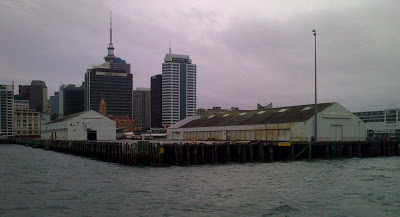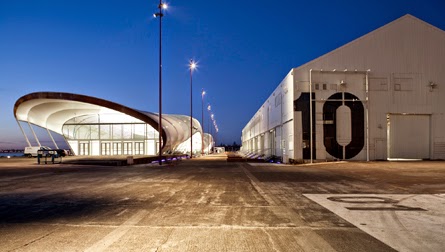
Located on Auckland’s waterfront, the Queens Wharf holds continuous valuable history for New Zealand and Maori individuals. In 2005, New Zealand was selected to be the host of the 2011 Rugby World Cup, which was a global event that gave the state an opportunity to display one of New Zealand’s many great traits– biculturalism: a coming together and integration of Maori and non-Maori culture. In preparation for the Rugby World Cup, a design competition was put in place. With hopes to integrate biculturalism into this project, architects initially created designs that were representative of Maori meeting grounds. Furthermore, the harbor would serve as a space where Maori rituals would welcome everyone. However, two old wool-exporting sheds occupied the space. In fact, from 1910-1914, five sheds were built for handling and storage; all were demolished except for the two remaining– Shed 10 and Shed 11. Both of the sheds’ exterior comprised of corrugated iron, a material often used in barns and sheds. The inside comprised of concrete, timber floors, steel columns, exposed beams and timber ceiling. With conversation of taking down the two sheds, which held colonial history, and in place creating a structure that was representative of biculturalism, the Auckland City Council found the competition too controversial. In the end, Jasmax, a construction company, took charge of rebuilding Shed 10 and recreating a Shed 11, which was “The Cloud”. To integrate Maori identity and culture, the concept of the cloud was derived from the Maori name for New Zealand, or Aotearoa, also known as the “land of the long white cloud”.
The attention to Queens Wharf and to these two sheds has sparked a conversation of how the space should be occupied on the wharf and what it can mean. The absence of such a discussion would have not recognized the importance of Maoriness. The idea of creating a welcoming space on the Queens Wharf representative of biculturalism seems to be contradictory. On the surface level, a Maori meeting grounds could have shared Maori culture and rituals with all individuals. It should be recognized that it also allows for the spreading of such culture that would not have been looked at or shared otherwise. This is seen through the discourse of demolishing both Shed 10 and Shed 11 in order to create a structure for a Maori meeting. Such a conversation also allows for an opportunity where Maori people may come together to project how they would personally like to be represented and viewed. With the recognition of Maori culture and identity, then the culture of indigenous individuals can rise and be shared amongst the greater public.

On the other hand, however, Maori culture may become idealized in an unrealistic way, essentially being romanticized. Additionally, the sharing of Maori culture in a modern setting presents the risk of the culture being “Disneyfied”, which is the idea in which a culture and its ideas as well as traditions become commoditized. Romanticization of Maori culture brings about the interesting conversation of what is at stake for the Maori people and what it means to be Maori. Creation of a modern space with the integration of Maori culture allows for individuals to acquire an imagined and masked idea of what Maori culture should be. This is a dangerous route. With past colonial history, it is crucial to recognize that indigenous individuals should be able to properly reground their identity through their own means and mechanisms. By doing so, it will allow the greater public to recognize not only the very existence of these people, but to appreciate the culture that they bare all together.
By Stephanie Yong